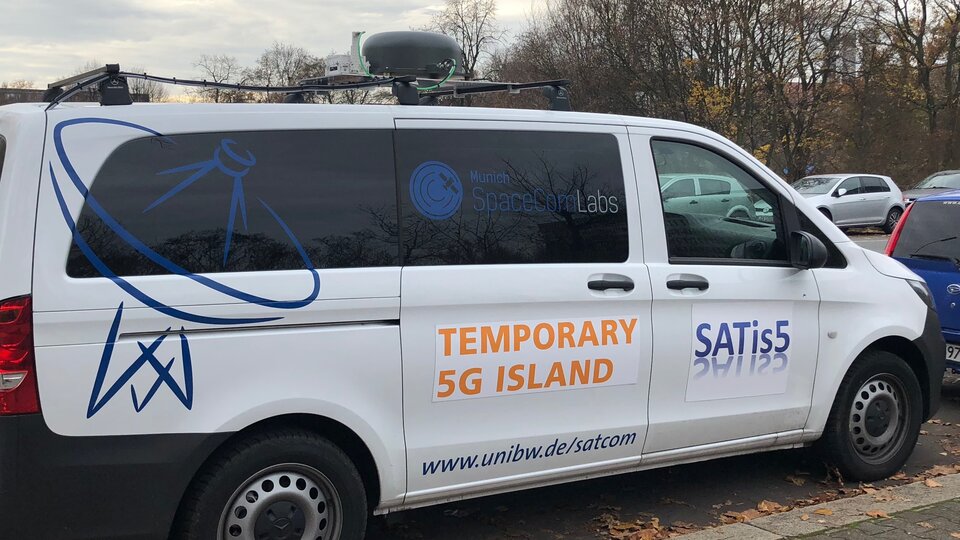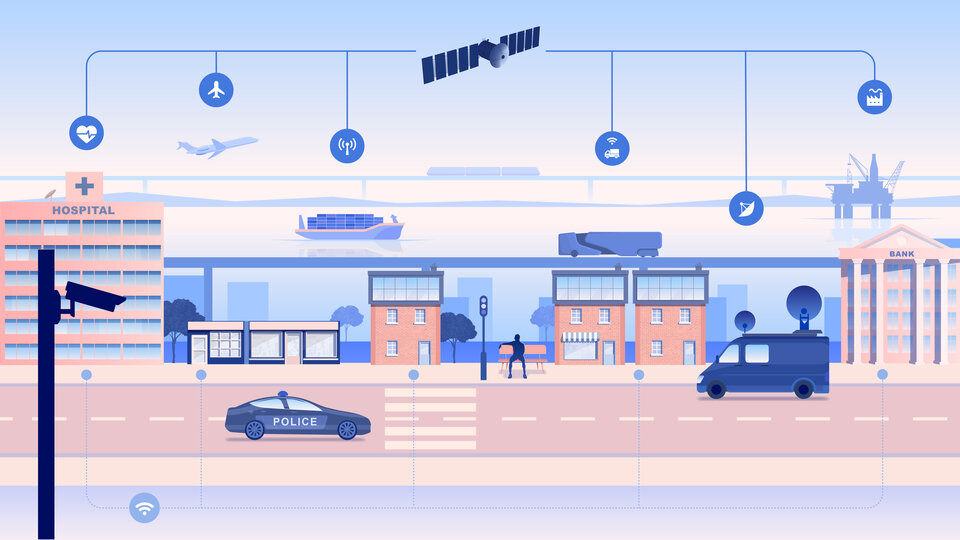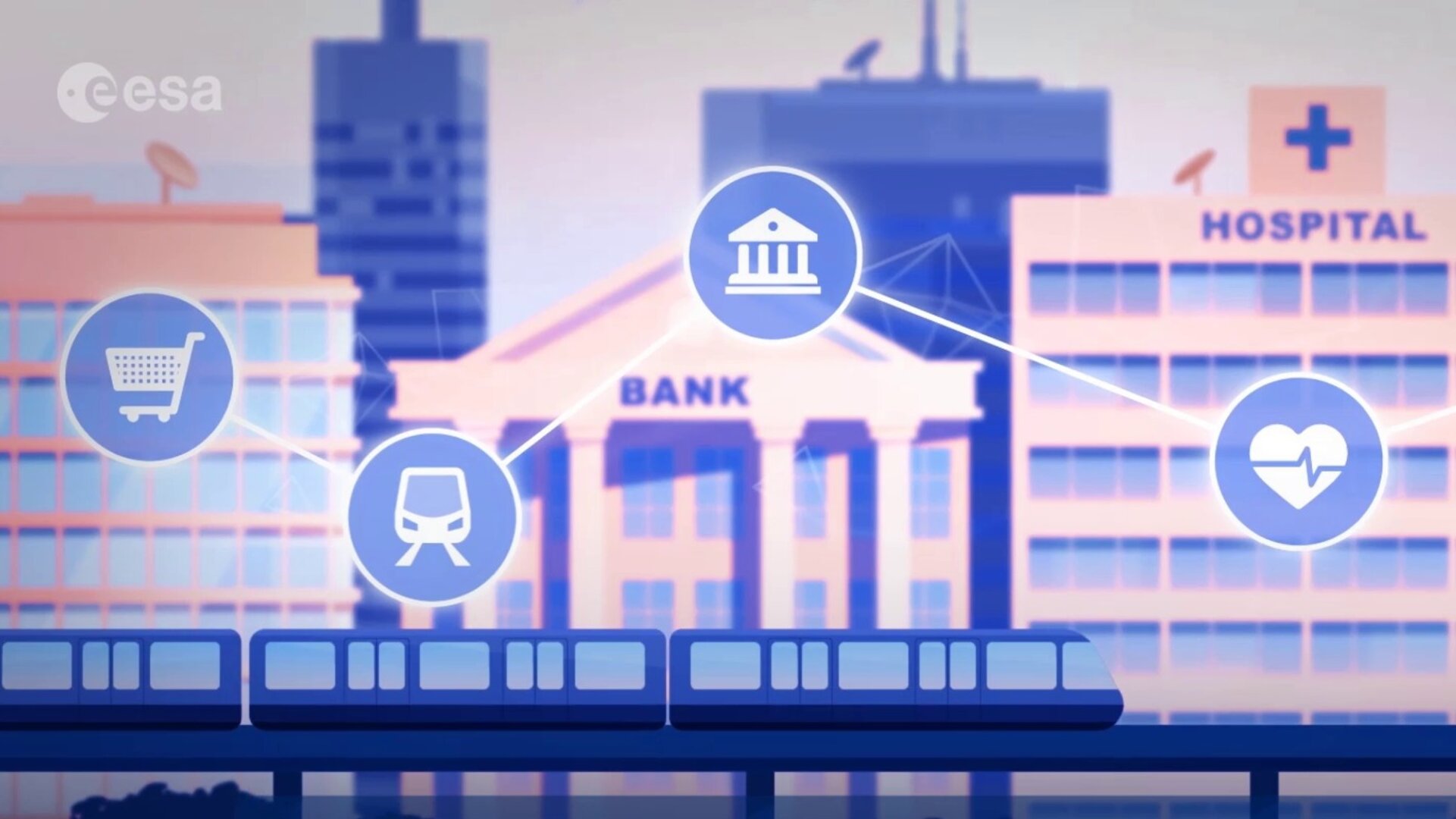Space-enabled Internet of Things shown in Berlin
ESA’s first live demonstration of 5G by satellite began last week, as an ingenious set-up of European space and ground nodes showed a crowd in Berlin how it can help connect devices in the much-lauded ‘Internet of Things’ (IoT).
The purpose of the exercise was to prove that space can deploy 5G services anywhere on Earth, no matter how isolated, congested or mobile the application.
It encompassed two demonstrations of technology enablers for multi-sliced, 5G satellite-enabled edge nodes.
The first concerned 5G connectivity ‘on the move’ with a satcom-equipped van, showing how this could be used for applications such as eHealth, rapid emergency response and temporary deployments for public events.

The second was content ‘edge delivery’ through a fixed, stationary network extended by satellites.
Both demonstrations were performed during Berlin 5G Week at Fraunhofer FOKUS using a distributed live demonstration platform called SATis5.
The SATis5 testbed involves fixed ‘hubs’ of cutting-edge ESA-funded 5G routing equipment in Germany, Ireland and Luxembourg, a ‘portable’ node like the van, and SES’s fleet of geostationary and medium Earth orbit satellites, together providing 5G satellite and cellular connectivity options.
Participants watched as the SATis5 operators showed data from five sensors on a screen, representing active devices like your phone, a wearable, a car, or a fixed IoT sensor aggregator, all connect and exchange information as it was routed through the combined space-and-ground network to the Fraunhofer 5G Playground; a dedicated 5G testing infrastructure.
SATis5 is developed under a partnership between ESA and a European consortium primed by Eurescom, with Fraunhofer-FOKUS, Fraunhofer-IIS, SES, Newtec GmbH, VT iDirect, the Technical University of Berlin, and the University of Bundeswehr.
The project is part of ESA’s efforts to showcase the value of satellites in the future 5G environment, under its Satellite for 5G Initiative.

5G is more than just the next generation of mobile services: it will not only be significantly faster than current data speeds, but will also be able to reliably connect people and devices, anytime and anywhere, with increased security.
A truly global, always-on network needs to reach every part of the world, however, which today’s terrestrial means do not. For that, you need satellites.
The help of space will for example be needed to link future IoT networks, as was demonstrated on this small scale in Berlin.
Satellites’ coverage can massively increase the service area by extending terrestrial networks through portable nodes like a satcom-enabled van or providing backhaul connectivity: linking small local networks to the main fibre spine.
This kind of ad hoc and supplementary delivery of services has a wide range of applications, which is what the SATis5 testbed is designed to demonstrate.
Over the course of 2019, the testbed will simulate different scenarios in which satellites can deliver 5G, such as broadband connectivity in remote areas, massive machine-to-machine/IoT, communications on the move and offsetting high traffic.

In disaster zones, for example, terrestrial networks are often bound to get damaged. Reliable, immediate connectivity is crucial to aid emergency response personnel in their efforts, and satellites can step in to provide it at short notice.
The more day-to-day uses can be found in relieving ground network congestion, or by serving areas that have poor terrestrial links, such as those that are remote, sparsely populated or dedicated to industry, like construction sites.
Today’s systems can also get congested during times of unusually high demand – like at a festival or large sporting event, or when disaster strikes – but with the help of satcom-enabled 5G mobile nodes, the overloaded terrestrial links can be bypassed to provide users with the same speed and reactivity from their devices as they would normally.
For all cases, the testbed plans to show that an integrated satellite and ground network can complement each other to deliver more reach, reliability, capacity and security.
The SATis5 demonstration will continue running experiments until the end of 2019, after which the testbed will remain operational and could be made available to other ESA-funded demonstrations of satellite-enabled 5G services.








